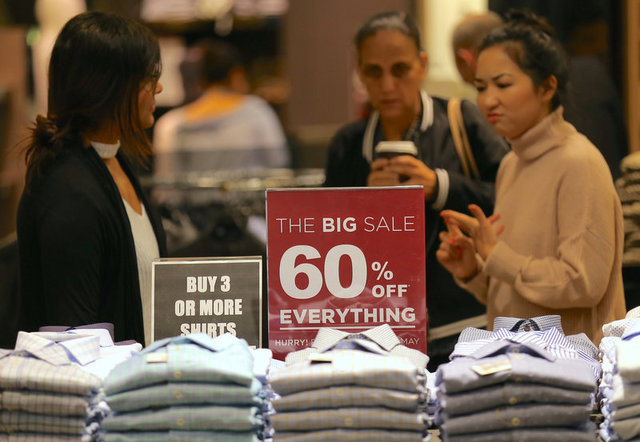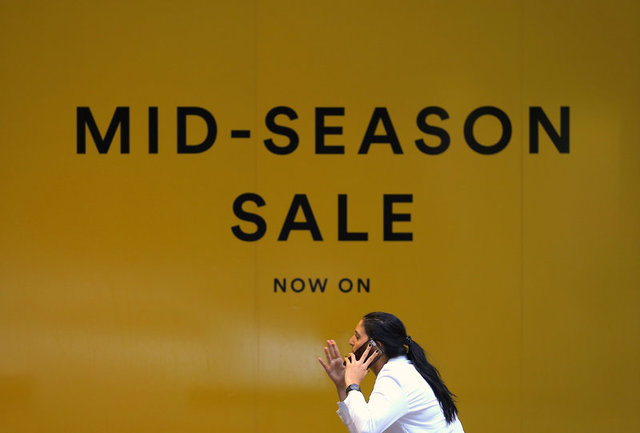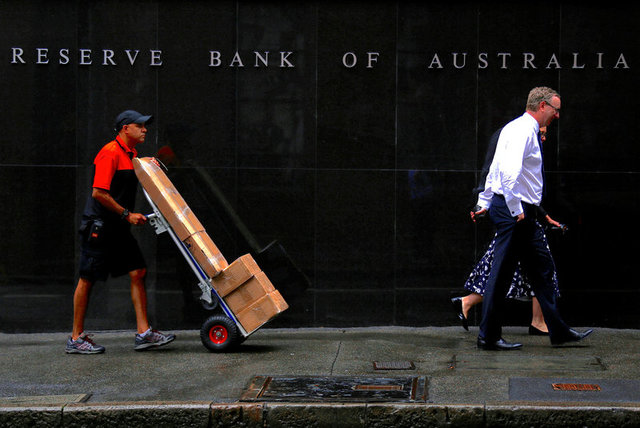Australia’s retail slugout adds to worry over weak inflation
 A shop assistant reacts as she talks with customers at a retail store in central Sydney, Australia. (Photo: Reuters)
A shop assistant reacts as she talks with customers at a retail store in central Sydney, Australia. (Photo: Reuters) SYDNEY – A fierce price war among retailers is threatening to keep a lid on improving inflation in Australia, compounding the problems of policymakers struggling to support still-weak domestic demand.
An uptick in consumer inflation has lowered the chance of another rate cut this year, but competition from global retailers such as Amazon.com Inc is set to keep prices under pressure – good news for shoppers but worrying for the central bank.
The country’s biggest retailers are suffering from a long spell of deflation that is unlikely to subside soon. Amazon and German supermarket chain Kaufland want to fortify their global presence Down Under and will join recent entrants such as H&M , Uniqlo and Aldi.

A woman reacts as she talks on her phone in front of a retail store displaying a sale sign at a shopping mall in central Sydney, Australia. (Photo: Reuters)
The Reserve Bank of Australia (RBA) said on Friday that “heightened competitive pressures” in the retail sector were among key factors keeping inflation subdued.
“The arrival of further new foreign retailers will be an important influence on final retail prices over the next few years,” the RBA said in its quarterly statement on monetary policy in which it expects underlying inflation may only fully return to its 2-3 percent target band by mid-2019.
Worried about deflation risks, the RBA slashed rates twice last year to a record low 1.50 percent. It is widely expected to hold rates until mid-2018 but subdued consumer prices could become a trigger for a move lower, and push the Australian dollar weaker.

A worker pushing a trolley walks with pedestrians past the Reserve Bank of Australia (RBA) head office in central Sydney, Australia. (Photo: Reuters)
“While consumers will benefit from lower prices, ongoing weakness in retail inflation is a key factor weighing on the broader inflation outlook,” said ANZ economist Jo Masters.
There was some relief headline consumer prices rose in the first quarter, taking the annual pace to its fastest since 2014 at 2.1 percent. But five of 11 sectors – about 30 percent of the CPI basket – saw price falls. Prices for women’s clothing, for example, were at their cheapest on record.
A study by Capital Economics shows price increase in what it classifies as ‘luxuries’ – clothing, alcohol and recreation – halved to 0.6 percent from 1.2 since the start of last year. Inflation in ‘essentials’ – food, electricity and insurance – accelerated to 3.4 percent from 1 percent.

A customer looks at shirts on sale in a retail store in central Sydney, Australia. (Photo: Reuters)
“In other words, it now costs much more to live, but not much more to have fun,” said economist Paul Dales, adding that this situation was hitting household spending on discretionary items. “It implies that consumption growth will be a little bit weaker.”
Clothing and homeware prices have fallen due to cut-throat competition among major retailers, which only intensified with the arrival of foreign chains to Australia.
While there are few details on how Amazon will position itself, the retail giant’s expected entry this year will worsen the pain of a retail industry that has been largely insulated by a housing boom and pick-up in global growth, analysts said.
Jefferies expects Amazon to capture between $3 billion to $8 billion of sales in Australia – about 30 percent of current online retail sales.
– Reuters


